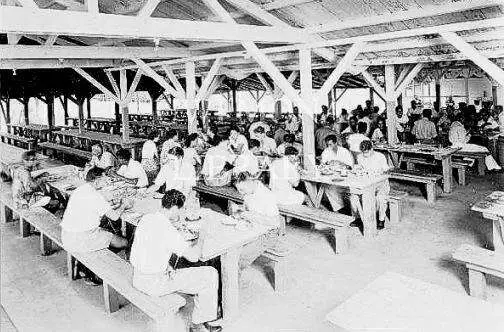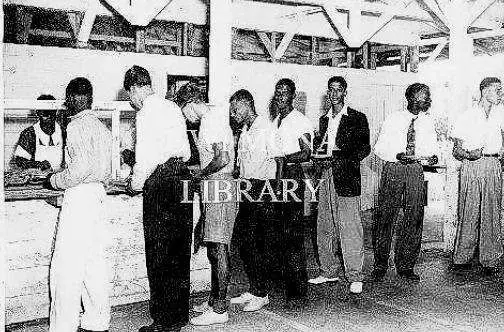
Remembering Gibraltar — the UWI’s first hall of residence
To the current students at UWI Mona, Gibraltar Hall is simply the name of a road on campus. But to the young, ambitious minds of the 1950s at the then University College of the West Indies, it was the first student hall of residence, their home away from home.
“We lived in huts that had been previously used by evacuees from Gibraltar,” Professor Ken Magnus, one of the hall’s residents told the Jamaica Observer.
“There were two long verandahs, divided into 15 rooms and each had a back and front door. Doors were divided into two so you could use it as a door or a window. When we got there, there were beds and bookshelves to use as living quarters,” Magnus stated.
Occupying the landscape between what are now the Old Library and UWI Mona & Community Co-op Credit Union on the campus, Gibraltar Hall was established among the buildings that used to be Gibraltar Camp. During World War II, such camps were used by the men, women and children of active service under the command of the military of Gibraltar. By 1944 the war had ended and the buildings were abandoned, after which they were used until 1947 as an Ex-Serviceman’s Training School.
But by October 1948, in the embryonic stages of UWI Mona, the camp had become Gibraltar Hall, opening its doors to its first set of undergraduate residents. These included 20 natural science and 30 medical science students from all over the Caribbean. Outfitted with elevated sentry stations, bath facilities, dining and sleeping quarters from the old camp, Gib Hall as it was called, paved the foundation for hall life as it is now known.
“They had clubs,” said Dr Suzanne Francis-Brown, UWI Museum curator, “including photography, horse riding [and] a dramatic society; they played football, tennis and cricket.”
“The principal came once a week to have ‘high table’,” Magnus, a member of the first natural science class in 1949 added. “He officiated at meals by saying a short grace: Benedictus. Benedicat. It was Latin. We did not know what it meant until after we left.”
Though Hazel Darby Richardson only spent one year on the hall before moving to what is now Irvine Hall, she said that she enjoyed the activities of the university as a whole as “it was nice to be in the company of the other girls.”
Fellow classmate, Dr Owen Minott, described his hall experience as “the best in the world.” Of his favorite memory, he muttered two words, “Seymour grass.”
Minott related the story of walking in the tall grassy area on a starry night, and being “up to your knees in fireflies.”
“Perhaps you thought you had died and gone to heaven,” he said. “It must have been the most beautiful part of St. Andrew.”
He also recalled listening to music in the junior common room and dining with the then principal, but not without hearing to the bell toll 20 times before meals.
With the Bell of Gibraltar as their symbol, the residents, Gibraltarites, made their mark on the campus for the next six years.
In 1953, pressure from the school’s then administration forced 35 Gibralarites to leave the old huts and move into what is now Chancellor Hall and others to Taylor Hall. With them they carried their well-known values of brotherhood and camaraderie. The Great Bell, which was previously used to indicate meal times and other Gib events, was now rang at Chancellor sporting activities.
Sixty-one years after its closure, Gibraltar Hall is barely evident on the UWI Mona campus.
“There is nothing left of Gibraltar Hall itself,” said Francis-Brown, “except some old photos and old memories.”
The hall’s recreational area is now the Dramatic Theatre and the Sacred Heart Church that housed the bell, which disappeared in 1968, is now the Old Library. Scattered across that end of the campus are some wooden structures and an old kitchen/dining room unit. The stone washtubs outside of the Caribbean Institute of Media and Communication (CARIMAC) are remnants of the camp, of which the buildings were a part.
Decades later, the historic bell emerged and was paid homage at a ceremony in October 2005. The now cracked relic is housed at Sculpture Park next to Irvine Hall. Sitting atop, the bell is enshrined in steel bars that form a globe around it. On the stand are plaques with the name of the Caribbean heads who have been educated by this the Caribbean’s premier tertiary institution. At the corner of Gibraltar Hall Road and Gibraltar Campus Way near the post office on campus, is a monument erected to pay tribute to the old camp. Hewn out rock from Gibraltar and Black African marble it was gifted by the people of Gibraltar in April 2007.
Gone are the buildings of Gibraltar Hall but it’s legacy is not, and it needs to be remembered.
“A lot of people don’t know that’s how the university started,” said Darby Richardson.
Francis-Brown shares a similar perspective. “For me, looking through the records and talking to some of the persons who were in the first cohorts, Gibraltar Hall is a part of the university’s history and it represents a time when the university was new and the people who came there appreciated it as an opportunity to not only better themselves but also to play a part in the development of their countries and the region,” she said.


























